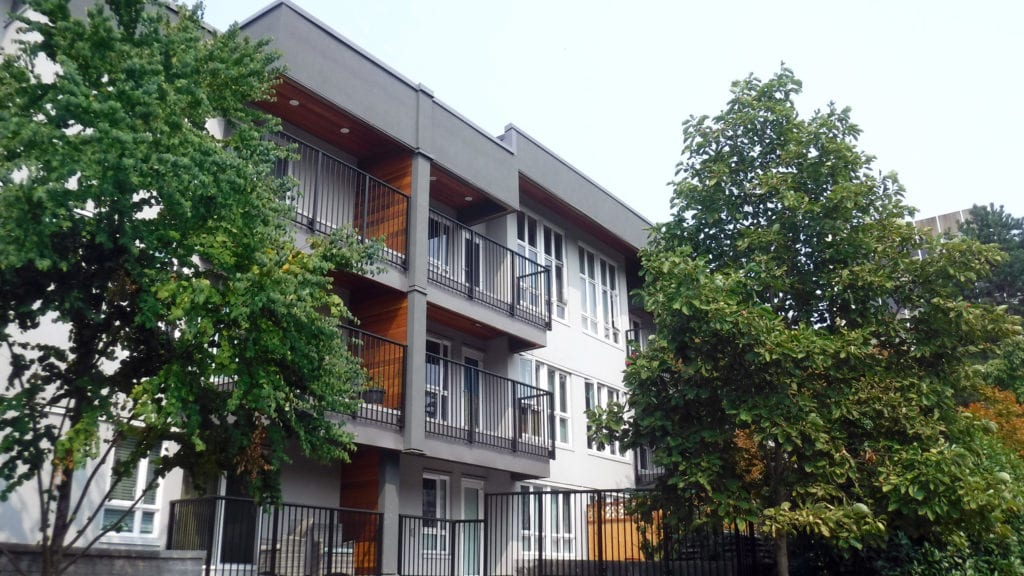
For people who aren’t familiar with Clearwater, what is it all about? How does it compare to other conferences?
It’s a building science conference that’s held once every three years in Clearwater, Florida, sponsored by ASHRAE and the US Department of Energy. The three-year cycle is important, because it aligns with the Canadian Conference on Building Science and Technology (CCBST), and the BEST Conference Building Enclosure Science & Technology™. Three years allows time for more substantive research to be carried out and documented; Clearwater has a strong focus on science.
Another distinguishing feature is that it’s an international conference, not domestic. One of the things I look forward to is that there’s a strong presence of Scandinavian and European research that we don’t get in any other conference in North America.
Why are conferences like this important? Why does RDH participate in them?
There are two broad reasons:
- To stay informed about what’s going on—new tools, new problems, new solutions. Also included in that is learning “who”—where are the centres of excellence, who are the up and coming young professionals to watch.
- To share what we know in a high-caliber environment, both to give back to the industry and to demonstrate that our findings can stand with those of rigorous, world-class institutions like the Institute for Research in Construction, SINTEF Building and Infrastructure, and Oak Ridge National Laboratory, to name a few.
What’s the most interesting or memorable thing you’ve learned at Clearwater?
That’s a really tough question. In the early days, I was just impressed that I got to hobnob with the leading lights of building science, people like Hartwig Künzel (one of the original developers of WUFI). Just being able to hang out and interact with them as peers was fantastic. In terms of knowledge from research, there are so many little bite-sized pieces that its’s hard to pick one.
On a general note, I’ve learned that Europeans can have major building failures and products that don’t work, just like North Americans!
What were some of the highlights for you of the 2019 conference?
One of the important stories for me this year was hearing that it is quite common in Europe to tent tall wood structures during construction. That isn’t necessarily something that would show up in a paper, but it comes out in conversation—and it’s this kind of informed conversation with someone from Finland that would be hard to have any other way.
I also thought the keynote speakers had some important insights. One was that different climates and different trades need to be assessed uniquely. You can’t just assume that if it works in one climate zone with one set of builders then it’s going to work everywhere. There needs to be diligence for particular applications.
I also thought it was notable that there’s an awful lot of Europeans thinking about renovation and retrofits. I see this trend becoming more dominant in North America. We will have to do something with our existing buildings to get to better performance—either retrofit or tear them down. Economics alone says we’re going to retrofit. It’s already happening.
Can you give some examples of how foundational or primary research bridges over into application in the field?
Well, all of RDH’s papers this year did that. Three were focused on meeting continuous insulation and thermal bridging requirements in building codes, both validating computer models with physical measurements and testing practical solutions. Another one reported on a project we’ve been working on for ASHRAE, developing the material property data to do the hygrothermal modeling so often demanded in new, innovative, and high performance enclosures. These results will wind up in the ASHRAE Handbook of Fundamentals.
Graham Finch also chaired a session on airtightness, which is of course a fundamental topic for anyone who’s serious about building performance.
RDH Papers in the Technical Library
Trends and Anomalies in Hygrothermal Material Properties from the ASHRAE 1696 Research Program (BLDG-19-017)
Chris Schumacher (RDH), Claire Lepine (RDH), and John Straube (RDH/University of Waterloo)
This paper presents an overview of the ASHRAE 1696 Research Project, “Thermal, Moisture and Air Transport Property Values for New Building and Insulating Materials.” Twenty-four materials (15 new and 9 updated) are addressed, test methods are summarized, and trends and anomalies are highlighted.
Thermal Resistance Measurements of Two- and Three-D Thermal Bridges Using an ASTM C177 Based Apparatus
John Straube (RDH/University of Waterloo), Joe Simonji, and Chris Schumacher (RDH)
This paper describes the design and commissioning test results of an apparatus for full-scale measurement of heat flow through thermal bridges. Measured data from this type of testing can be used to confirm and validate computer models to more reliably quantify the impact of thermal bridging.
Thermal Evaluation of Masonry Shelf Angle Supports for Exterior-Insulated Walls
Adam Di Placido, Bailey Brown, Drew Chong, Chris Schumacher (RDH)
This paper discusses 3D thermal modeling, calibrated with physical testing, to evaluate the thermal performance of options for shelf angle support design for exterior-insulated anchored masonry veneer walls. The results demonstrate that with the appropriate shelf angle support design, high-R exterior-insulated masonry veneer walls are achievable.
Structural Testing of Screws through Exterior Insulation for Steel-Frame Walls
Lorne Ricketts, Jun Tatara (RDH)
Previous research and in-situ performance have shown that using only screws directly through exterior insulation to provide cladding attachment is a thermally and structurally efficient solution for wood-frame walls. This study focuses on the impact of density and thickness of insulation materials on the structural performance of screws through exterior insulation as a cladding support system in to a steel stud back-up wall.


